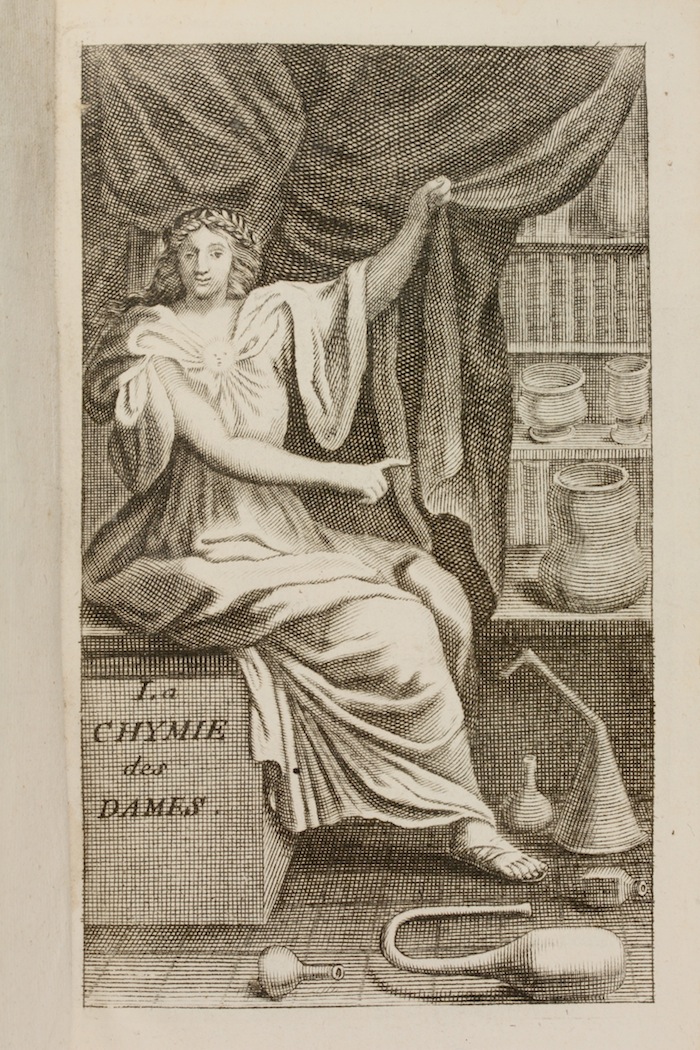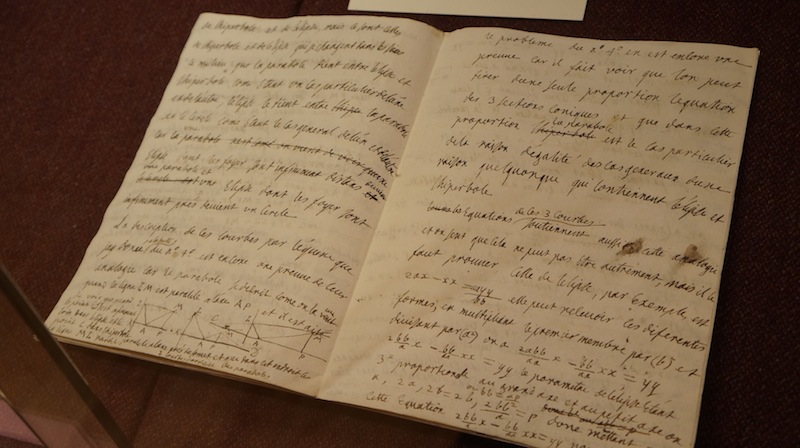Some Obscure, All Extraordinary: Historical Women in Science Honored

NEW YORK — In April 1749, Émilie du Châtelet's was 42 years old, pregnant, living with her ex-lover Voltaire in her husband's chateau and working 17 hours a day to finish the mathematical commentary for her French translation of Isaac Newton's "Principia."
Voltaire had already begun an affair with another woman (his niece) years before, and by that time, du Châtelet, too, had moved on to new lover, Jean François de Saint-Lambert, a French military officer, poet and the father of her unborn child. Du Châtelet's sense of urgency about her book was not unwarranted; she died that September, 10 days after giving birth to a daughter who also did not survive.
Before her death, du Châtelet penned a letter to Saint-Lambert, presciently expressing her anxiety about finishing the manuscript (and pardoning her beau for unkind words in a previous note).That letter is one of dozens of artifacts featured in a show here at the Grolier Club, "Extraordinary Women in Science and Medicine: Four Centuries of Achievement." [Images: Artifacts from Extraordinary Women in Science]
That letter, set inside a glass case, encapsulates an intriguing, if tragic, human story. But during a recent visit to the bibliophilic cub's Manhattan headquarters, curator Robert J. Ruben pointed to what he thought was the real prize inside the display: one of du Châtelet's recently discovered notebooks, in which she worked out problems of celestial mechanics to explain Newton's text.
The show at the Grolier Club doesn't dwell so much on hardships that science-minded women of the last 400 years faced because of their gender, though there were many. Nor does it linger on personal lives, though some led rather exuberant ones. Rather, the exhibition plucks some of these intellects out of obscurity, detaches others from the men like Voltaire who sometimes eclipsed their reputation, and honors the already-famous scientists for their lesser-known contributions, including Florence Nightingale's pioneering work in statistics.
Cheated
"Lise Meitner is the one woman in this show that I will say unequivocally was cheated out of a Nobel Prize," said Ronald K. Smeltzer, another curator of the Grolier exhibition.
Sign up for the Live Science daily newsletter now
Get the world’s most fascinating discoveries delivered straight to your inbox.

Meitner, a Vienna-born physicist, was a research student of the great scientist Max Planck in Germany. She later became the mastermind behind a series of experiments with German chemist Otto Hahn that led to the discovery of nuclear fission. The onset of World War II complicated Meitner's career, since she hailed from a liberal Jewish family. The scientist fled to Sweden, where she took refuge at the Nobel Institute for Physics in Stockholm and continued to secretly collaborate with Hahn by mail.
In 1939, Meitner, with her nephew Otto Frisch, published the first paper in nuclear physics to use the word "fission," recognizing that the uranium atom actually split when it was bombarded by neutrons. A copy of the article, published in the journal Nature, is on display at the Grolier Club. [Twisted Physics: 7 Mind-Blowing Discoveries]
"It was Lise Meitner who explained these experiments as splitting atoms," Smeltzer said. "When this paper appeared, all the leading physicists at the time immediately realized, here was a source of great destructive energy."
And yet, in 1944, when the Nobel Prize in chemistry was awarded for the "discovery of the fission of heavy nuclei," Hahn was named as the sole recipient.
Though she helped usher in the beginning of the nuclear age, Meitner was a pacifist, and she turned down an offer to join the Manhattan Project in 1943. She did come to the United States in 1946 to lecture for a semester at The Catholic University of America in Washington, D.C., where one student apparently had enough foresight to ask for her autograph. His signed lecture notes are on display.
Happier tales
Another scientist featured in the show is a local: Brooklyn-raised Barbara McClintock, "a square peg in a round hole," as Ruben described her. At Cornell University in the 1920s, McClintock "learns Yiddish — don't ask me why — plays guitars, is kind of a hippie of the day," Ruben said. But then, she finds her place in the school's agricultural department, where she becomes interested in Indian corn, Ruben explained.
"What she does is, she figures out the genetics behind the variation of the different-colored kernels," Ruben said. "She's the first one to show translocation of genetic material — that genetic material is not static, but develops. This changes the entire concept of how we inherit things."
McClintock was also a "total pack rat," Ruben said. Among her vast collection of papers at the American Philosophical Society in Philadelphia, Ruben found a brown paper bag — the kind she used in the field to prevent unintended corn fertilization — scrawled with a diagram to explain trisomy, a phenomenon in which a plant has a single extra chromosome. The finding eventually led to McClintock's discovery that DNA sequences can change their position in the genome, for which she won a Nobel Prize. The modest bag is featured in the exhibition alongside an ear of Indian maize from Cold Spring Harbor Laboratory in New York.
How to choose?
In all, 32 women are featured in the show. Other highlights of the exhibition include a piezoelectric quartz apparatus that the curators say is the earliest extant piece of equipment used by Marie Curie. (A note to the radiation-wary: It has been decontaminated.) There's also a watercolor portrait of Ada Lovelace, the English mathematician whose algorithms presaged today's computers. Then there's a set of Beevers-Lipson strips, a type of pre-electronic calculating device, like the kind that crystallography pioneer Dorothy Hodgkin would have used to decipher the structure of molecules in penicillin and insulin. [The 11 Most Beautiful Mathematical Equations]
The show, which will be on display until Nov. 23, was initiated by curator Paulette Rose, a rare-books dealer.
"About two and a half years ago, I felt that it was time for an exhibition of this sort to take place," Rose told LiveScience. She explained that she and her two co-curators had certain criteria in picking which scientists to feature.
"In the earlier centuries, they didn't have to discover something; they didn't have to publish a book, but they had to show some movement toward progress," Rose said. "In the 18th century and after, they had to publish — and they weren't helpmates."
And they all had to be dead. That means the last woman to be included was Rita Levi-Montalcini, who died in December 2012 and shared the Nobel Prize in physiology and medicine with Stanley Cohen for their work on the control of nerve-cell growth.
Follow Megan Gannon on Twitter and Google+. Follow us @livescience, Facebook & Google+. Original article on LiveScience.











